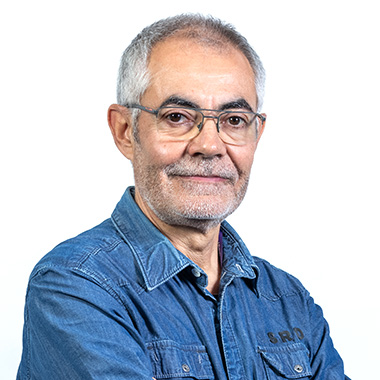Nanomaterials Growth Unit
Unit Leader: José Santiso

Pulsed laser deposition of epitaxial thin films and characterisation of different materials (mainly oxides), looking at strain and relaxation mechanisms, and the microstructural and functional properties of ultrathin films (metal-insulating transitions, ferroelectric, ferromagnetic, oxide ionic conducting, thermoelectric, transparent conducting, resistive switching, etc.)
MOCVD growth of 2D layers of transition metal dichalcogenides
Structural characterisation by RHEED and advanced XRD, and high temperature electronic transport properties
Fundamental aspects of interfacial phenomena in layered oxide materials and multilayers for their use as components in ionic and protonic solid oxide fuel cells (SOFCs), as well as in resistive switching devices
Accurate structural characterization of epitaxial thin films making use of advanced X-ray diffraction techniques (reciprocal space mapping under non-ambient conditions and external stimuli: gas change, voltage, illumination)
Our unit produces films by means of pulsed laser deposition and MOCVD techniques and works in close collaboration with many ICN2 research groups, as well as with external teams. A recently developed two-laser PLD setup allows co-ablation of two targets for deposition of films with composition gradient, as well as new mixed composition materials. Our unit carries out advanced structural characterisation of thin films, primarily by X-ray diffraction as well as working on the development of advanced methods for the characterisation by X-ray diffraction of epitaxial thin films. These include in-plane diffraction, GIXRD analysis, as well as 3D reciprocal space mapping. This microstructure research is complemented with HRTEM characterisation.
We are particularly interested in surface and interfacial phenomena, such as oxygen exchange kinetics. For this purpose we have developed a time-resolved XRD technique that monitors the subtle chemical expansion produced in transition metal oxide thin films when changing their oxygen stoichiometry. We aim to perform in-situ and in-operando characterisation by XRD in different solid state electrochemical devices. These studies have also been extended to in-situ structural studies of ferroelectric materials, and resistive switching, as well as photostricitive materials.
We have also continued working on the development of a thin film MOCVD process for the growth of high-quality ultrathin transition metal dichalcogenides, starting with MoS2, in collaboration with the ICN2 group led by Prof. José A. Garrido.
Last year, we started working in collaboration of Prof. Gustau Catalan’s group on the fabrication of single-crystal free-standing membranes of perovskite oxides by using water-soluble sacrificial epitaxial layers in an attempt to implement functional oxides in a new generation of electronic devices. Currently, we are engaged in the fabrication of free-standing membranes of different ferroic oxide materials to analyse the intrinsic characteristics of strain-free ultrathin films.

CERCAGINYS is the access platform to the around 200 facilities of all the 41 CERCA institutes.
Unit Leader

José Santiso
CSIC Tenured Scientist
jose.santiso@icn2.cat
Dr José Santiso earned his degree in Physics at the Universitat Autònoma de Barcelona (UAB) in 1988, later obtaining his PhD from the Universitat de Barcelona (UB) in 1993.
After his doctoral studies, he worked as a visiting scientist at Cambridge University (UK) from 1994 to 1996. He then joined the Institut de Ciència de Materials de Barcelona (ICMAB) as a research associate and became a CSIC tenured scientist in 2002. In 2007 he moved to the former CIN2 as the leader of the Pulsed Laser Deposition and Nanoionics Group, which later became the ICN2 Nanomaterials Growth Unit.
In 2012 he received the Somiya Award from the International Union of Materials Research Society (IUMRS) for his contributions to solid state ionics. He completed several stays at different laboratories: in 2014 he joined for three month the International Institute for Carbon-Neutral Research (I²CNER, Kyushu University) thanks to a grant from the Japan Society for the Promotion of Science. In 2015 stayed at the Massachusetts Institute of Technology (USA) for a three-month period and between 2018 and 2019 he joined for a few months the Universida Técnica Federico Santamaría in Valparaíso (Chile).
Dr Santiso has authored more than 140 articles, with about 2690 citations and an h-index of 28.

